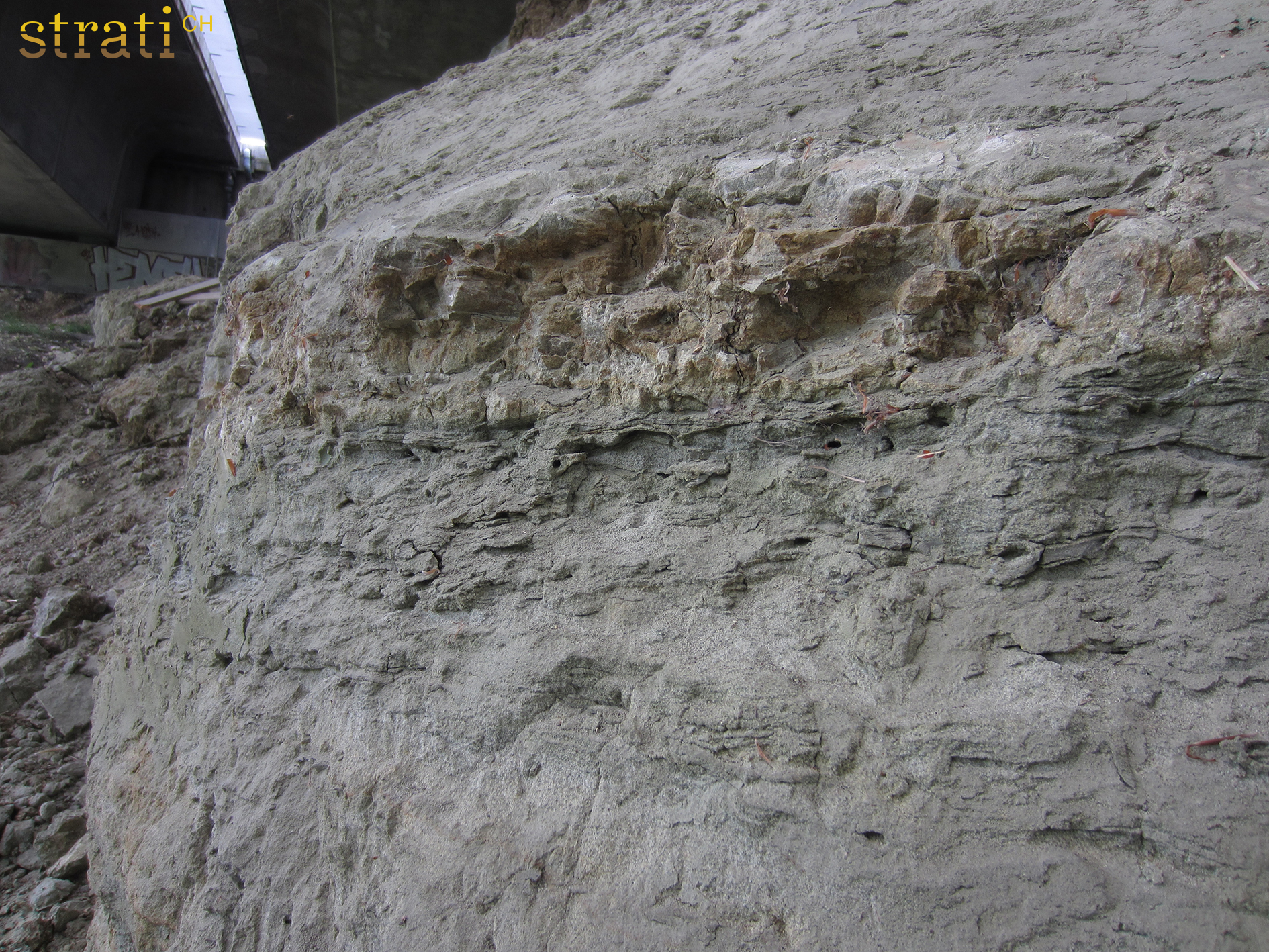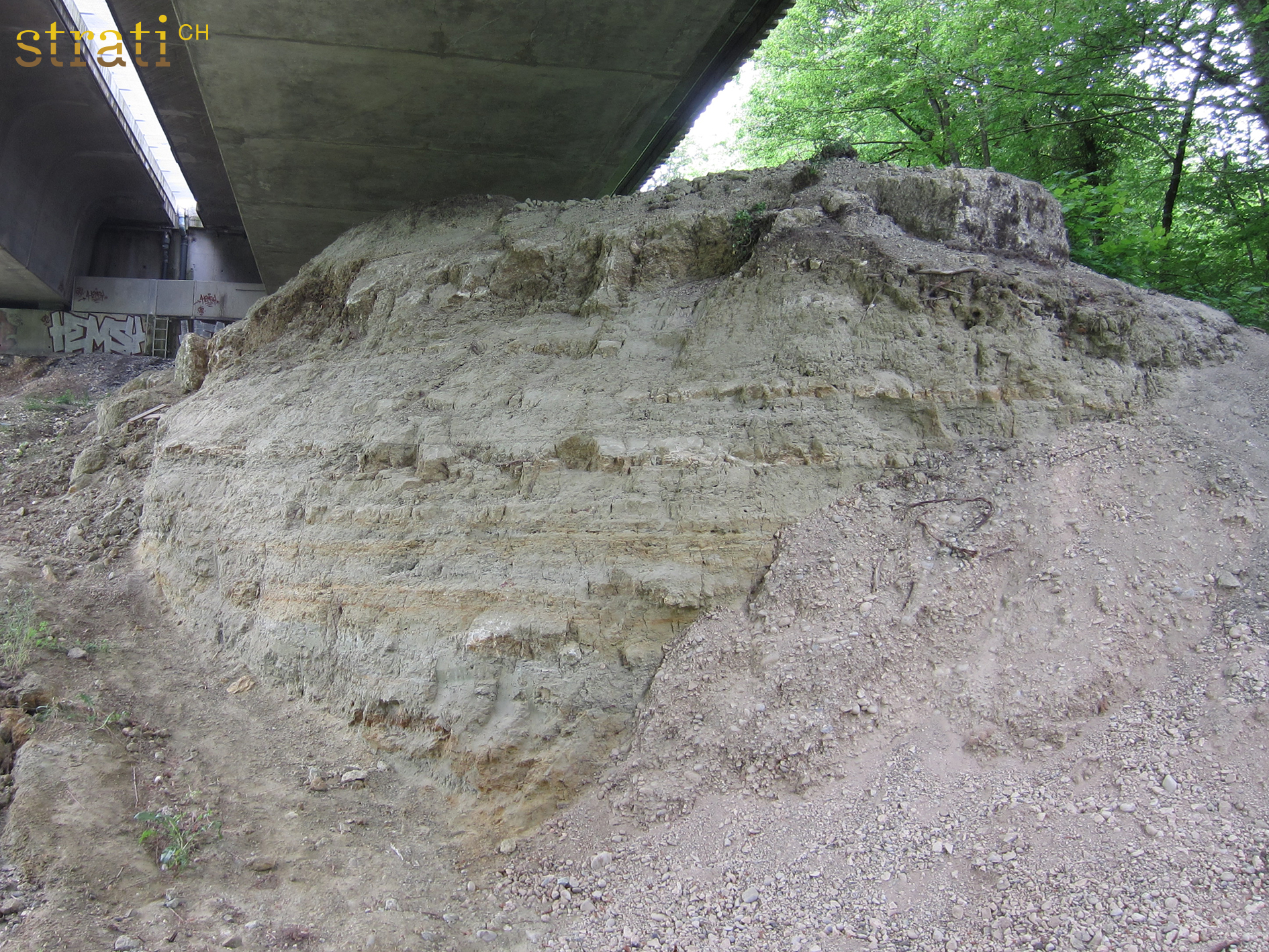Grès de Scie Besse
Back to Banc du PonthoudRepresentation and status
- Color RGB
- R: 245 G: 170 B: 170
- Rank
- lithostratigraphic Bed
- Validity
- Unit is in Use
- Status
- informal term
Nomenclature
- Deutsch
- Scie-Besse-Sandstein
- Français
- Grès de Scie Besse
- Italiano
- Arenaria di Scie Besse
- English
- Scie Besse Sandstone
- Origin of the Name
-
Scie Besse (VD), WNW La Mouille Mougnon
- Historical Variants
-
Scie Besse Beds (Pictet et al. 2016)
Links
- Synonyms
Description
- Thickness
- Max. 5,75 m dans la région de Bellegarde-sur-Valserine, env. 4 m dans la région de Ste-Croix.
Hierarchy and sequence
- Superordinate unit
- Units at roof
- Units at floor
Age
- Age at top
-
- Late Aptian
- Note about top
-
Zone à D. nodosocostatum
- Age at base
-
- Late Aptian
- Note about base
-
Zone à Parahoplites melchioris
- Dating Method
-
Biostratigraphie des ammonites (Pictet in prep.)
Geography
- Type area
- Jura méridional
Palaenography and tectonic
-
- Cretaceous of the Jura Mountains
- Tectonic unit (resp. main category)
-
-
Jura
:
Juragebirge
-
Jura
:
- Kind of protolith
-
- sedimentary
- Metamorphism
- non metamorphic
References
- Definition
-
(2016) :
The Perte-du-Rhône Formation, a new Cretaceous (Aptian-Cenomanian) lithostratigraphic unit in the Jura mountains (France and Switzerland). Swiss J. Geosc. 109/2, 221-240
From the base to the top of the Mussel Mb, five subunits have been identified (Fig. 8).
The first one, the Scie Besse Beds (Fig. 8a), is a 0–5 m thick green sandstone, which microfacies is characterized by a glauconite and quartz-rich bioclastic packstone (Fig. 8b). The glauconite-rich sandstone passes upwards to a tidal crinoidal limestone showing oblique stratification and flaser structures.


